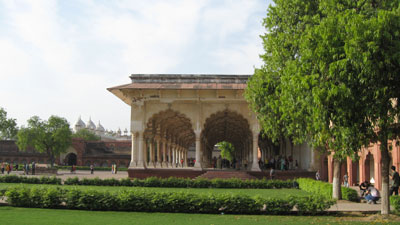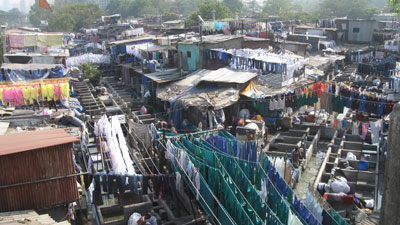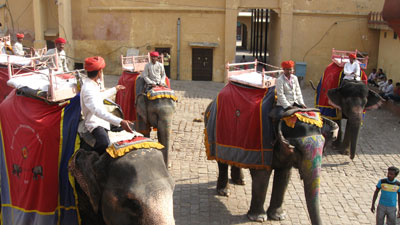Tigers, temples and, of course, the Taj Mahal on an affordable tour of northern India
This article appears on page 50 of the August 2014 issue.
by Karen Wells; Traverse City, MI
Our April 2014 tour with Gate 1 Travel (Fort Washington, PA; 800/682-3333), the 15-day “Classic India with Ranthambore,” was one of our best travel bargains. My husband, John, and I paid $2,012 per person, including international flights from Chicago.
The first two days were committed to getting there, with about 20 hours on Swiss via Zürich and a total time change of 9½ hours (from EDT). As promised, a Gate 1 representative met us in New Delhi as we left Customs.
Our first hotel, the Holiday Inn New Delhi, was very nice, with a spacious bath and bedroom, alleviating our concerns that our low-cost trip meant budget accommodations.
Delhi to Agra
In Old Delhi, we visited the Jama Masjid, the largest mosque in India, with a courtyard capable of holding 25,000 devotees. We found that shorts were not acceptable attire, particularly on women, and several in our party were forced to add coverings before being granted entry. Later we enjoyed a rickshaw ride through the narrow streets.
After a lunch stop, we visited a UNESCO World Heritage Site, Qutab Minar, the world’s tallest brick minaret. We passed the President’s Residence, the Parliament House and the Red Fort on our city tour.
Unfortunately, photo stops weren’t always actual stops, due to security measures. In one case, the bus simply slowed for our photo opportunity.
The next day, we were off to Agra via a fine toll road with little traffic. This was to be a rare experience, we discovered later.
Once outside town, the scenery was comprised of women harvesting wheat by hand and a number of small, brick-making operations.
Dinner at the hotel was fairly typical of the included dinners: a number of vegetarian dishes, perhaps one or two “non-veg” dishes (typically, chicken or mutton), rice and a variety of breads, including a delicious flat bread called naan.
We transferred from our large bus to a smaller, open-air vehicle to get to the Taj Mahal. Built by Emperor Shah Jahan as a mausoleum for his beloved Queen Mumtaz Mahal, it took 22 years to complete (1631-53). It was truly awe inspiring.
In the afternoon we toured Agra Fort, built of red sandstone. While some of our group took in an optional dinner, which included a try at Bollywood dancing, John and I were happy to check out the local McDonald’s, which was walking distance from our hotel. Potato and paneer (Indian cheese) offerings replaced beef, though the chicken, fish and French fries seemed similar to the traditional menu items.
On to Jaipur
Traveling from Agra to Jaipur made for a long day. We stopped along the way at an eighth-century step well in Abhaneri. The complex was much larger than we’d expected, displaying impressive engineering.
Upon arriving in Jaipur, we had a brief rest at our hotel before heading off to an obligatory jewelry store stop, followed by an unexpected treat of Indian yogurt served in a disposable clay cup. Then we went to see a Bollywood movie.
One better understands Bollywood’s appeal after seeing families and friends exchanging the heat, noise and commotion of the city for the cool escape of the movie theater for just a couple dollars each.
We started our tour of Jaipur with an elephant ride up to the 16th-century Amber Fort, which offered views of the countryside that included Maota Lake and extensive fortifications reminiscent of the Great Wall in China.
Next we visited Jaipur Handicrafts, where we had both carpet-making and textile-printing demonstrations. This was one of the few shopping stops where nearly everyone purchased something.
Later we toured Jantar Mantar, another World Heritage Site, with its collection of 18th-century astronomical instruments, including a sundial that was accurate within two seconds. We spent only an hour there, but one could easily have spent a day studying the innovative instruments.
Ranthambore
The next day we drove to Ranthambore National Park over rough, narrow roads that made for slow going. We also had a “behind the trees” bathroom stop, as there were simply no suitable roadside facilities.
At our camp, the rooms were fairly basic, but the pool was inviting and provided a nice break from our previous on-the-go days.
Our accommodating guide, Sandeep Kaushik, arranged a cooking demonstration prompted by several of us commenting that we’d like to learn more about some of the dishes we were eating.
After dinner, a naturalist provided a short slide show to orient us to the park. An early-morning game drive the next day was followed by breakfast.
Our teeth-jarring ride included sightings of several varieties of deer plus wild boars, crocodiles, colorful birds and intriguing mountain scenery but no tigers. Those of us who went on the afternoon ride were rewarded with the sight of a female Bengal tiger (mom to four cubs) dining on a spotted deer.
As dusk fell, we enjoyed barbecued appetizers outside with a music-and-dance performance.
Leaving Ranthambore, more rough roads slowed our progress, though we eventually made it out to a main road, arriving at Kota’s Umed Bhawan Palace hotel in time for a late lunch. This was one of our few one-night stays and was our only “heritage” hotel experience. (Indian heritage hotels include former royal residences, traditional havelis and historical forts.)
Our afternoon’s activity, a visit to the City Fort Palace museum, was almost foiled, as it was closed due to a national election, but a few phone calls resulted in its being opened just for us, and we had a pleasurable visit.
Udaipur
We continued on to Udaipur via the fort at Chittaurgarh. The fort, which covered 700 acres, was so big that the company engaged motor rickshaws to take us from one point of interest to another within the complex. Its history spanned 2,000 years, so we got only a sampling of all there was to see there.
After the hot visit to the fort, Udaipur, with its lakes and greenery, was a welcome respite. The Udaipur Trident was truly lovely, with a large, cool entry, a pool area, flowered grounds and a mini wildlife sanctuary on the shores of Pichola Lake.
Feeling adventuresome, we headed out of the hotel to find a restaurant and ended up at Machaan. Its rooftop dining was spectacular in this city of lakes and palaces.
Our dinner — black lentil dal for me, mutton skewers and corn soup for my husband — with naan, water and a Kingfisher beer came to 1,060 rupees, less than $20. In fact, we so enjoyed our meal that another couple asked us to take them there the following night, and we had an equally good dinner. (The restaurant also served Chinese and “Continental” pasta dishes for those tiring of Indian food.)
The City Palace at Udaipur was beautiful, but, by this time, many of us were feeling as if we’d visited one too many palaces. A trip to a nearby active Jagdish Temple provided a chance to hear adherents chanting, and most of us found that more interesting.
We had a few hours free — allowing time for a quick swim before an atypical rainstorm — then we were off for a boat ride on Lake Pichola, including a stop on an island where they were setting up for a wedding party.
Mumbai
Nearing the end of our trip, we boarded an early-morning flight from Udaipur (3:45 wake-up call!) to Mumbai. The security check at the airport was extremely thorough, so our tour guide’s warning to not take much in our carry-ons was good advice.
After our arrival in Mumbai mid morning, we stopped to watch the dhobis (washermen/women) in an open-air laundromat, visited a spice market, spent some time at the Gandhi Museum and saw the Gateway of India on the Arabian Sea.
Part of our group continued on with an extension to Goa, leaving the rest of the group with a free day in Mumbai. John and I spent most of our day hiking the city and observing the extremes of the rich financial district with its modern skyscrapers and the people living on the streets.
Overall, we saw an incredible number of sights and had a rich variety of experiences during our time in India. It was not, however, an easy trip.
April marks the beginning of the hot season, and on most days we had temperatures of 100-plus degrees. A fall or winter trip would likely be more comfortable, though pricier.
About half of our group of 17 had one or more days of “Delhi belly,” despite being experienced travelers and careful eaters. Most of us came prepared with antibiotics, antidiarrheals, etc.
We had long, full days, often without formal lunch stops, so our supply of granola bars and snacks proved helpful.
If you are looking to have some great and varied travel experiences for a modest price, this trip should be on your travel list.




